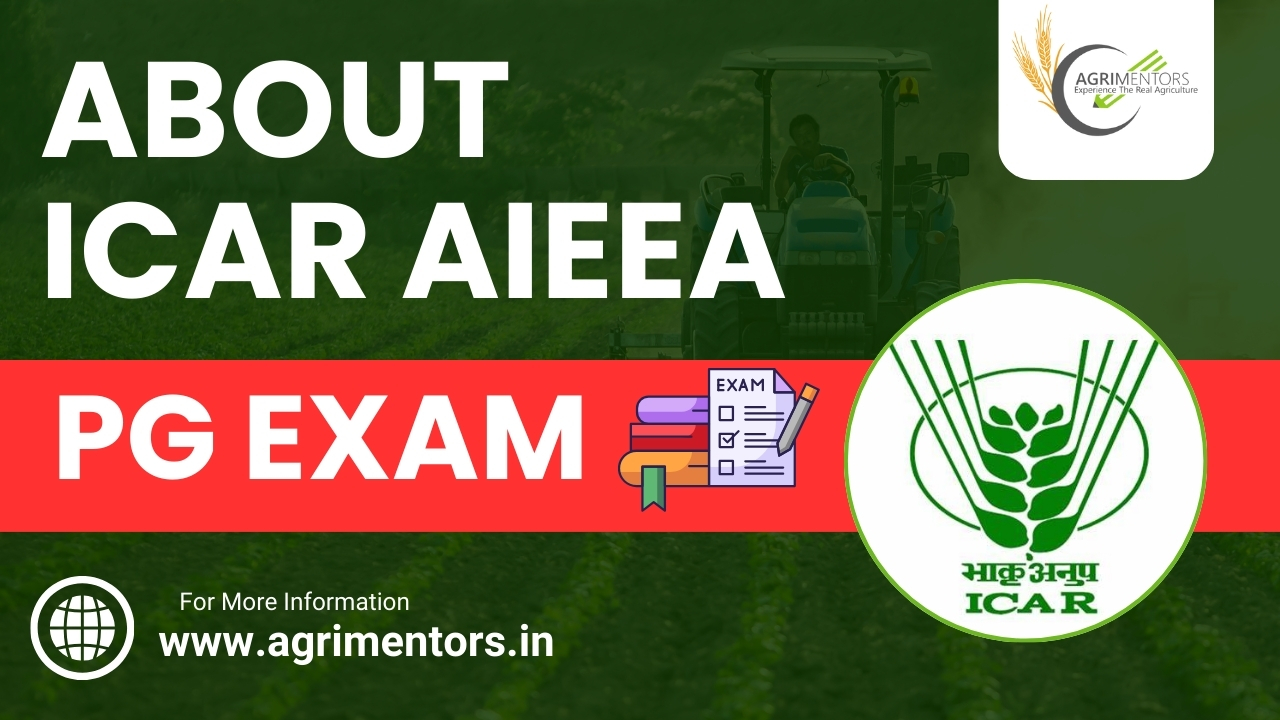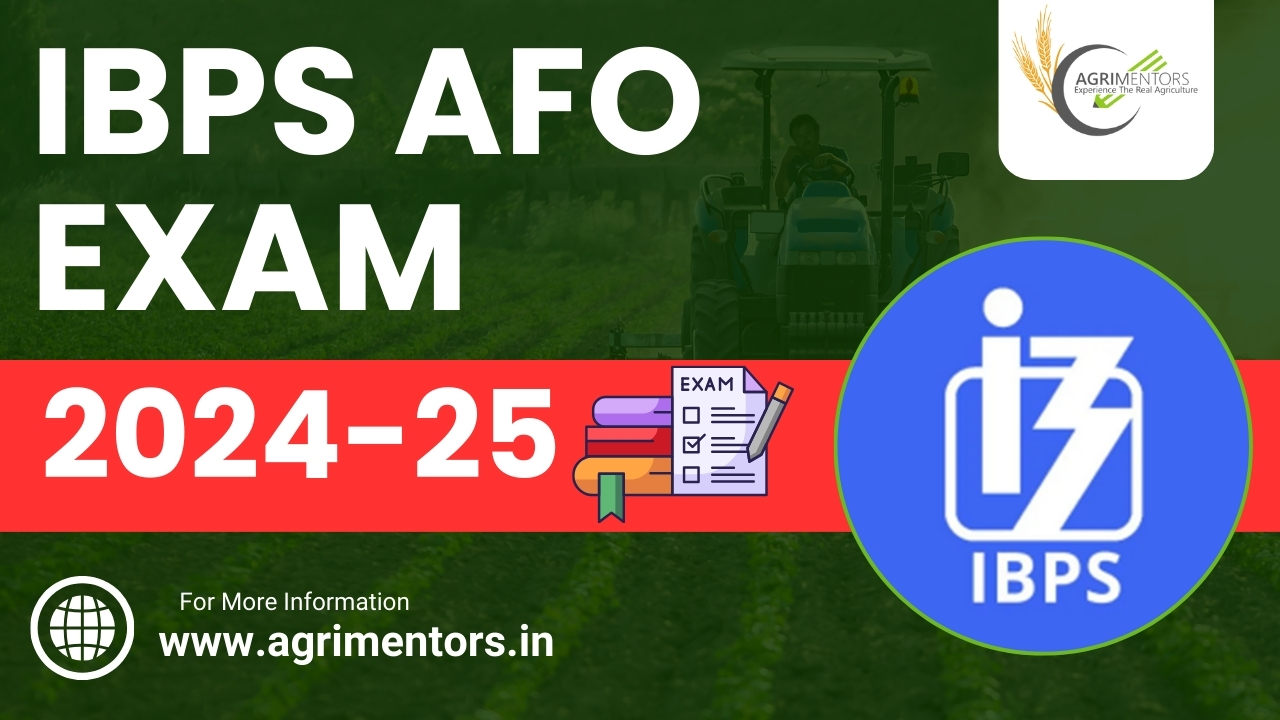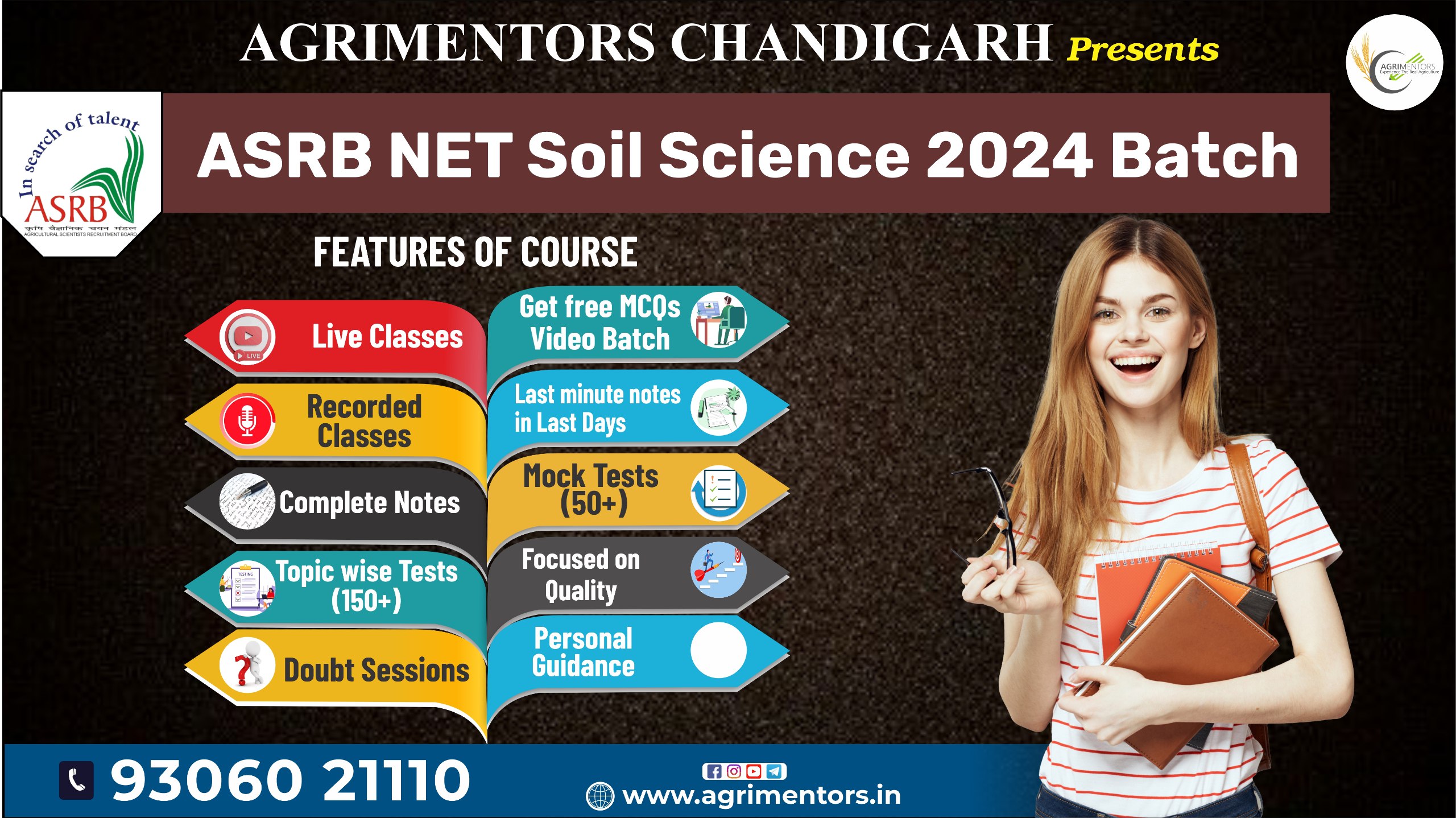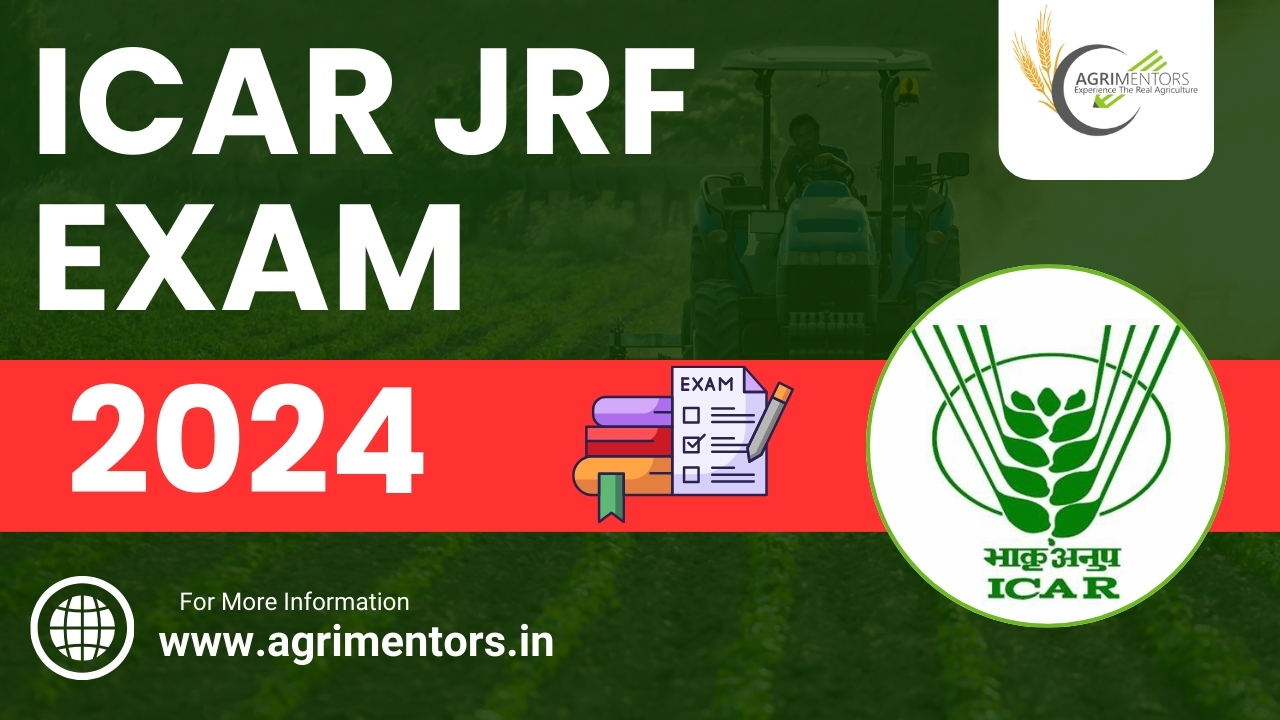
CUET PG (AGRICULTURE)
Eligibility criteria and qualifications:
Candidates with 4-years B.Sc. (Ag.)/B.Sc. (Hons.) Ag. /B.Sc. (Horticulture) Degree with credit-based course programme.
Candidates with 4-years B.Sc. (Horticulture) Degree with credit-based course programme under the guidelines of ICAR will be considered for all disciplines of M.Sc. (Ag.) course except M.Sc. (Ag.) Agronomy.
At least 6.0/10 or 2.5/4, 3.5/5, 4.0/ 6 OGPA for general candidates and 2.0/4, 3.0/5, 3.5/6 and 5.5/10 OGPA for SC/ST/OBC/EWS/PWD candidates in qualifying examinations as per university guidelines.
Has not secured more than one III-division or equivalent OGPA in his/her academic career. *A student having equivalent bachelor’s degree in agriculture from a foreign university may also be considered. For appearing in the CUET (PG), there is no age limit for the candidates. The candidates who have passed the bachelor's degree/equivalent examination or appearing in irrespective of their age can appear in CUET (PG) examination. However, the candidates will be required to fulfil the age criteria of the University in which they are desirous of taking admission.
CUET PG Overview
Common University Entrance Test (CUET) – PG is a national exam conducted by the National Testing Agency (NTA) in March. It offers a common platform for candidates across India, especially from the North-East, rural, and remote areas, providing equal opportunities for admission to various Central and State Agricultural Universities, as well as other institutions and autonomous colleges. This single exam streamlines the admission process, ensuring broad access to higher education.
Exam Pattern
Syllabus for Horticulture, Forestry, Seed
Science, Rural Technology, Agronomy, Plant Breeding, Genetics (SCQP16)
Basic Biology
Spontaneous generation theory, prokaryotes vs eukaryotes, functional anatomy, structure and organization of bacteria, fungi, and algae – economic importance, methods of sterilization, rhizosphere microorganisms and importance, plant-microbe interactions in soil, microbial transformation of nutrients in soil. Carbohydrates, lipids, proteins, and amino acids – occurrence and classification, carbohydrate and lipid metabolism, glycolysis, TCA cycle, pentose phosphate pathway, ETC and oxidative phosphorylation, secondary metabolites – occurrence, classification, functions, and applications.
Ecology
Physical environment; biotic environment; biotic and abiotic interactions. Concept of habitat and niche; niche width and overlap; fundamental and realized niche; resource partitioning; character displacement. Characteristics of a population; population growth curves; population regulation; life history strategies; concept of metapopulation – demes and dispersal, intergenic extinctions, age-structured populations. Types of interactions, interspecific competition, herbivory, carnivory, pollination, symbiosis.
Nature of communities; community structure and attributes; levels of species diversity and its measurement; edges and ecotones. Types; mechanisms; changes involved in succession; concept of climax. Structure and function; energy flow and mineral cycling; primary production and decomposition; structure and function of some Indian ecosystems: terrestrial and aquatic. Major terrestrial biomes; theory of island biogeography; biogeographical zones of India.
Plant Biology
Photosynthesis: Light harvesting complexes; mechanisms of electron transport; photo-protective mechanisms; CO2 fixation - C3, C4, and CAM pathways. Citric acid cycle; plant mitochondrial electron transport and ATP synthesis; alternate oxidase; photorespiratory pathway. Nitrate and ammonium assimilation; amino acid biosynthesis. Plant hormones: Biosynthesis, storage, breakdown, and transport; physiological effects and mechanisms of action. Structure, function, and mechanisms of action of phytochromes, cryptochromes, and phytotropins; stomatal movement; photoperiodism and biological clocks.
Solute transport and photoassimilate translocation: Uptake, transport, and translocation of water, ions, solutes, and macromolecules from soil, through cells, across membranes, through xylem and phloem; transpiration; mechanisms of loading and unloading of photoassimilates. Secondary metabolites: Biosynthesis of terpenes, phenols, and nitrogenous compounds and their roles. Responses of plants to biotic and abiotic stresses; mechanisms of resistance to biotic stress and tolerance to abiotic stress. Plant tissue culture and applications, molecular marker technology, transgenic technology – GMOs, transgenic plants for biotic and abiotic stress resistance and quality improvement, molecular pharming – production of vaccines, therapeutic proteins, industrial enzymes, and bioplastics.
Microscopic Techniques: Visualization of cells and subcellular components by light microscopy, resolving powers of different microscopes, microscopy of living cells, scanning and transmission microscopes, different fixation and staining techniques for EM, freeze-etch and freeze-fracture methods for EM, image processing methods in microscopy.
Methods in Field Biology
Methods of estimating population density of animals and plants, ranging patterns through direct, indirect, and remote observations, sampling methods in the study of behavior, habitatcharacterization - ground and remote sensing methods.Horticulture
Scope and importance; global scenario of horticultural crops, classification of horticultural crops – nutritive value of horticultural crops, horticulture zones of India. Systematic botany – terminology, morphology description, and classification of root, stem, leaf, inflorescence, flower, and fruits – flowering mechanism – modes of pollination – asexual/vegetative reproduction – floral biology – fertilization and fruit set, principles involved in nomenclature.
Landscaping and Gardening
Importance and scope of gardening, gardens in India – concepts of landscape gardening – styles and types of gardens – Hindu, Mughal, English, Italian, Persian, and Japanese gardens, ornamental landscaping in environmental protection.
Food Technology
Food processing industries/institutions/food scientists of importance in India, causes of food spoilage, methods of food preservation, post-harvest and storage of fresh fruits and vegetables, preparations of fruits and vegetables for processing, technology of foods of animal origin.
Syllabus for Agro - forestry (SCQP02)
Importance of Agriculture/Forestry/Livestock in National Economy:
Principles of crop ecology and crop adaptation, climate shift and its ecological implications, Agro-ecological regions in India.
Geographical distribution of crop plants, Greenhouse effect, Climatic factors and their effect on plant processes and crop productivity, Role of GIS and GPS in agriculture.
Major pests and diseases of rice, wheat, cotton, chickpea, sugarcane, and their management.
Important rural development programs in India; organizational setup of agricultural research, education, and extension in India; Elements of statistics.
Agricultural Soil Fertility and Fertilizer Use:
Essential plant nutrients and their deficiency symptoms, concept of essentiality of plant nutrients, Indicators of soil fertility and productivity.
Sustainable Land Use Systems:
Sustainable agriculture: parameters and indicators, Conservation agriculture, safe disposal of Agri-industrial waste for crop production, Agro-forestry.
Layout and Establishment of Orchards:
Pruning and training; propagation, climatic requirement, and cultivation of fruits like mango, banana, citrus, guava, grape, pineapple, papaya, apple, pear, peach, and plum; cultivation of plantation crops like coconut and cashew nut and spices like black pepper, coriander, turmeric, important physiological disorders.
Forest:
Importance, types, classification, ecosystem, biotic and abiotic components, ecological succession and climax, nursery and planting technique, social forestry, farm forestry, urban forestry, community forestry, forest management, silvicultural practices, forest mensuration, natural regeneration, man-made plantations, shifting cultivation, taungya, dendrology, hardwoods, softwoods, pulpwoods, fuelwoods, multipurpose tree species, wasteland management.
Agroforestry: Importance and land use systems, forest soils, classification and conservation, watershed management, forest genetics and biotechnology, and tree improvement, tree seed technology, rangelands, wildlife: importance, abuse, depletion, management, major and minor forest products including medicinal and aromatic plants, forest inventory, aerial photo interpretation, and remote sensing.
Forest depletion and degradation: Importance and impact on environment, global warming, role of forests and trees in climate mitigation, tree diseases, wood decay and discoloration, tree pests, integrated pest and disease management, biological and chemical wood preservation, forest conservation, Indian forest policies, Indian forest act, forest engineering, forest economics, joint forest management, and tribology.
Syllabus for Microbiology (SCQP03)
• Microbiology (SCQP03) covers the history and scope of microbiology, the position of microorganisms in the living world, and the structure of bacterial cells and bacteriophages. It includes topics such as the nitrogen cycle, the general account of microbes in diverse environments, microbial growth curves, gene transfer mechanisms, basic concepts of gene regulation, microbial mutations, fermentative production, nitrogen fixation, biofertilizers, and microbial interactions. The Cytology and Genetics section focuses on the ultrastructure of plant and animal cells, the cell cycle, Mendel's laws, cytoplasmic inheritance, gene interaction, linkage and crossing over, sex determination in plants and animals, modern concepts of gene structure, and mutations and mutagens.
• The Biochemistry section explores proteins, enzymes, carbohydrates, lipids, nucleic acids, and the genetic code. The Physiology portion covers water relations, cell membranes, photosynthesis, respiration, and hormones. The course also delves into Biotechnology with topics on genetic engineering and bio techniques like chromatography and electrophoresis. Lastly, the Ecology section examines the abiotic and biotic environments, adaptations, population and community ecology, ecosystem function, ecological succession, and environmental pollution.
Syllabus for Food Science and Technology (SCQP12)
Introduction to Food Science and Technology: Definition, scope, and current trends in food science and technology, food groups, nutrients, and balanced diet, definition and meaning of food, nutrition, nutrient, health, concept, and characteristics of a balanced diet, introduction to basic food groups and nutrients, food pyramid, macro and micronutrients, effect of processing on nutrients, browning reactions in foods: Classification (enzymatic, non-enzymatic, and metallic browning), causes, and prevention of browning.
Cereals and Pulses: Composition and nutritive value, types of cereals, processing of cereals and pulses: Gelatinization of starch and factors affecting it, germination, and fermentation, toxic constituents in pulses, milling of pulses.
Fruits and Vegetables: Classification of fruits and vegetables, composition and nutritive value, effect of processing on pigments.
Chocolate and Cocoa Products: Cocoa bean processing, preparation of chocolate liquor, cocoa butter, and chocolate.
Milk and Milk Products: Composition and nutritive value, introduction to liquid milk technology: Clarification, pasteurization, homogenization, fortification, and sterilization, types of milk, effect of processing on milk, introduction to milk products.
Eggs: Composition and nutritive value, structure of an egg, egg quality and deterioration, green ring formation in boiled egg, preservation of eggs, egg foams: Stages of preparation and factors affecting them, effect of heat on egg proteins, functions of eggs in cookery.
Meat, Fish, and Poultry: Composition and nutritive value, selection/purchasing criteria for meat, fish, and poultry, tenderization of meat.
Sugar: Composition and nutritive value, properties of sugars, manufacturing/refining of sucrose, sugar cookery: Crystalline and non-crystalline candies, sugar-based products.
Fats and Oils: Composition and nutritive value, types of fats/oils and their functions, rancidity in fat and its prevention, changes in fat during heating, care of fat used for frying, emulsions.
Introduction to Food Hygiene and Food Adulteration: Food hygiene: Factors affecting food safety, personal hygiene, adulteration: Adulterants and their effects on health.
ASIC BAKING TECHNOLOGY: Baking Industry and its scope in the Indian economy, history of Bakery: Present trends, prospects, and nutrition facts of bakery products.
Wheat Grain Technology: Wheat grain: Its structure, milling of wheat; types of refined wheat flour, composition of refined wheat flour: Gluten, amylose/amylopectin, enzyme activity, moisture, and storage.
Cake Technology: Preparation of cakes: Types of cakes, ingredients used, methods of batter preparation, steps in cake making, balancing of cake formula, evaluation of the baked cake, operational faults in cake processing and the remedial measures, labeling and packaging, costing, cake decoration: Different methods of cake decoration.
Pastry Technology: Preparation of pastry: Types of pastries (short crust, puff/flaky, and choux pastry), ingredients, processing and evaluation, faults and remedies.
INTRODUCTION TO FOOD SAFETY AND PRESERVATION: Purpose and scope of preservation, objectives of preservation and processing, scope of the preservation industry in India, post-harvest changes and spoilage: Physical, chemical, and microbiological changes in fruits and vegetables, factors affecting the growth of microorganisms and control measures.
Food Safety: Key terms, factors affecting food safety, recent concerns, food laws, standards, and regulations, food additives and contaminants, hygiene and sanitation.
Principles and Methods of Preservation: Asepsis, use of low temperature, use of high temperature, removal of moisture, removal of air, use of chemical preservatives, fermentation, irradiation, gas preservation, newer methods.
Fruit and Vegetable Processing: Sauces and beverages: Chutney and sauces - definition, method of preservation, steps in preparation, fruit beverages: Definition and classification, method of preservation (pasteurization, use of chemical preservatives, sugar), role of various ingredients.
ADVANCED BAKING TECHNOLOGY: Bread technology: Preparation of bread - ingredients used, methods of dough preparation, steps in bread processing, evaluation of the baked bread, staling of bread, diseases of bread.
Biscuit and Cookies Technology: Preparation of biscuits and cookies: Types, ingredients, processing, and evaluation, crackers.
Food Packaging: Packaging: Importance, essential features of an ideal package, various food packaging materials and their characteristics, recent trends in packaging: Active packaging, intelligent packaging, RFID, label regulations and designing for packaged foods, nutritional labeling.
Marketing and Cost Control: Marketing: Definition, scope, understanding the 4Ps – (Product, Price, Place, Promotion), marketing techniques, marketing and distribution of processed products, cost control: Food cost, labor cost, and other costs, costing of processed products.
ADVANCED FRUIT AND VEGETABLE PRESERVATION TECHNOLOGY
Dehydration and Concentration: Definition and objectives, method of preservation, normal drying curve, water activity, factors affecting rate of drying, sun drying, types of dehydrators (air convection, drum, freeze, and vacuum driers), steps in dehydration of fruits and vegetables, concentration: Definition and objectives, techniques.
Refrigeration and Freezing: Definition and objectives, difference between freezing and refrigeration, systems of refrigeration, method of preservation, steps in freezing fruits and vegetables, cryogenic freezing of fruits and vegetables, evaluation.
Canning: Definition and objectives, selection of fruits and vegetables, method of preservation, steps of canning fruits and vegetables (with special emphasis on blanching, exhausting, and heat processing), spoilage of canned foods.
Introduction to New Food Product Development: Need and importance for developing a new product, types of new products, challenges, failure of new product.
Fruit and Vegetable Processing – Pectin Products: Preserves and pickles, jam, jelly, and marmalade: Definition, role of pectin and theory of gel formation, method of preservation, steps of preparation, evaluation, preserves: Definition, method of preservation, steps of preparation, evaluation, candied, crystallized, and glazed fruits, pickles: Definition, classification, method of preservation, steps of preparation of vinegar pickles, evaluation.
FOOD SAFETY, HYGIENE, AND QUALITY TESTING
Food Laws and Regulations: Introduction to food acts, laws, and standards, National Food Safety and Standards Act, international standards, regulatory agencies, Consumer Protection Act.
Food Quality Management: Characteristics of quality, quality control, quality assurance, total quality management, quality management system, good manufacturing practices, hazard analysis critical control point system.
Introduction to Food Safety and Hygiene: Food hygiene, factors affecting food safety, food spoilage, food handling, special requirements for high-risk foods, safe food cooking temperature and storage techniques.
Hygiene and Sanitation in Food Service Institutions: Cleaning and disinfection, personal hygiene, pest control, waste disposal.
Sensory Methods of Food Quality Testing: Sensation of taste, smell, appearance, and flavor, sensory evaluation techniques.
Objective Methods of Food Quality Testing: Physical test methods (moisture, acidity, water activity, texture, viscosity, color), simple methods of chemical analysis (protein, fat, water, ash), microbiological sampling and testing.
Categories
Recent posts


NABARD Grade A Exam
3 Jul 2024
IBPS AFO Exam 2024-25
3 Jul 2024
Syllabus
3 Jul 2024



